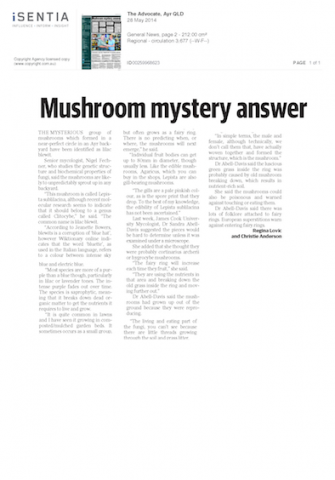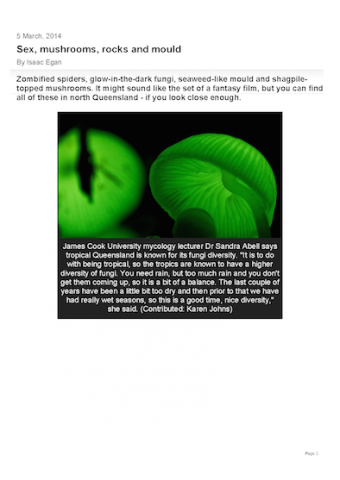Resources

 TREAT Newsletter
TREAT Newsletter
January 2013
Recent decades have seen a big shift in the public perception of rainforests – from being overwhelmingly viewed as an obstacle to be cleared for agriculture or felled as a source of timber, to being valued by many and mostly protected from further clearing. It is now also several decades since TREAT members and other dedicated restoration pioneers started to develop tree-planting methods aimed at returning a cover of rainforest to former agricultural land in areas of ecological importance. During that time there have been many successes. These include the development of effective revegetation techniques and the creation of continuous ribbons of restored rainforest stretching across the agricultural landscape, and protecting now-flowing streams that were once degraded bogs.

 Australian Canegrower
Australian Canegrower
27 May 2013
Seagrass meadows form a buffer between catchments and the reef, trapping sediments and absorbing nutrients. But these seagrass meadows have been in decline in the Great Barrier Reef over the past few years, and researchers from the National Environmental Research Program (NERP) are looking into what effect flood plumes – resulting from the extraordinary rain events we have seen in far north Queensland in recent years – are having on water quality on our reef.

 Australian Canegrower
Australian Canegrower
18 March 2013
This is the third in a series of articles on the National Environmental Research Program Tropical Ecosystems hub (NERP TE). [Editor’s note: see 12 November 2012 Australian Canegrower for the first article in this series.]
Annual surveys of reefs by researchers from the Australian Institute of Marine Science (AIMS) have shown that average coral cover on the Great Barrier Reef (GBR) fell to half its initial level during the 27 years prior to 2012.

 The Advocate
The Advocate
28 May 2014
THE MYSTERIOUS group of mushrooms which formed in a near-perfect circle in an Ayr backyard have been identified as lilac blewit.
Senior mycologist, Nigel Fechner, who studies the genetic structure and biochemical properties of fungi, said the mushrooms are likely to unpredictably sprout up in any backyard.

 The Advocate
The Advocate
21 May 2014
A GROUP of mysterious purple mushrooms have formed in an almost perfect circle in a backyard in Ayr.
Eighty-six-year-old Ayr resident, Berteram “Hock” Keyse first found a small group of the purple mushrooms in his backyard almost 12 months ago, but more recently, they’ve created a near-perfect circle in his grass.

 Australian Canegrower
Australian Canegrower
04 February 2013
New studies from a north Queensland research body may reveal just how farm chemicals behave as run off and how long they persist in tropical waters, especially near the Great Barrier Reef.
The National Environmental Research Program Tropical Ecosystems hub (NERP TE) is running a number of projects focusing on pesticides, herbicides and sediments and their effect on water quality.

 ABC Far North Queensland
ABC Far North Queensland
05 March 2014
Zombified spiders, glow-in-the-dark fungi, seaweed-like mould and shagpiletopped mushrooms. It might sound like the set of a fantasy film, but you can find all of these in north Queensland - if you look close enough.

 Australian Canegrower
Australian Canegrower
12 November 2012
Queensland’s sugarcane farms are located in some of the most picturesque coastal regions in the state, bordering rainforests, mountainous ranges and of course, the Great Barrier Reef.
Cane growers, as land managers, stewards and guardians of this landscape, form a large facet of many programs that aim to protect the iconic natural environments of Queensland.


